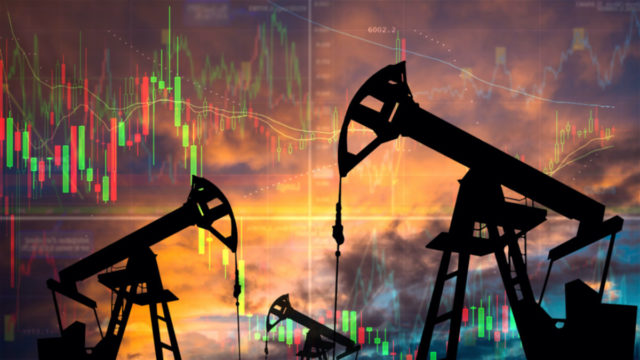MoneyTalks is Stockhead’s regular recap of the ASX stocks, sectors and trends that fund managers and analysts are looking at right now and in this edition we’re looking at the energy sector.
Today we hear from Aaron Binsted, portfolio manager at Lazard Asset Management.
“I think a really interesting story at the moment is the local energy sector, particularly LNG – I think that’s something people should be paying attention to,” he told Stockhead.
“Gas is about 20-22 per cent of the primary energy mix globally however it’s only 10 per cent of the primary energy mix in Asia.”
In addition “the key driver of the LNG market — the traded gas market — is comprised of about four economies in Asia being India, China, Japan and South Korea. There’s lots of other countries but they’re the big four,” Binsted says.
“If you look at India, their primary energy share was only 6 per cent gas but by 2030 they want to take it up to 25 per cent gas, so there’s going to be a huge increase in LNG demand from India.”
“If we look at China, at the end of 2020 they had regasification capacity (that’s when they take liquified gas and put it back into [natural] gas) of about 85 million tonnes and by end of 2025 that’s probably going to increase to 178 million tonnes.”
“So there’s just huge demand coming through and if you look at Asia aggregate – it was 380 million tonnes in 2020, and Shell for example thinks by 2040 that figure will be 700 million tonnes.”
Why energy is in demand in Asia?
What is driving this increased demand for energy? There are several factors on both the demand and supply side.
“You’ve got huge growth as Asian countries modernise and develop, and another trend is decarbonisation as these economies are very coal dependant,” Binsted says.
“It’s very difficult to decarbonise without increasing their gas, just a 1-to-1 switch from coal to gas is about a 34 per cent reduction in C02 emissions and that’s before you look at things like carbon capture, so there’s really big structural demand tailwinds there,” Binsted said.
“Also being in the region, Australia has a shipping advantage versus North America of $1 to $2. So that’s the demand side – positive, long term structural growth.”
“And if you look at supply side, we’ve had a big reduction in investment in oil and gas capacity in the last few years.”
In 2014, capital expenditure on oil and gas was approximately $700 million but the plunge in oil prices has sent that to approximately $200 million.
“It’s fallen by two thirds from those 2014 levels, there’s drastic reduction in new supply,” Binsted said.
“And we’ve also seen pressures from large international companies – in Europe Shell and BP – and in the US players lie Exxon, Chevron and Phillips – in Europe they’re being pushed to go into new energy so instead of spending new investment dollars on oil and gas it’s wind, solar and hydrogen. So the amount of capex in new supply is drastically reduced.”
What does this mean for the ASX energy sector?
Lazard Asset Management is not the first fund manager to argue the ASX energy sector is undervalued.
But what arguably adds ‘insult to energy’ is that other stock market’s energy sectors have been rising – for example the US energy sector is up 43 per cent in 2013.
Meanwhile as Binsted pointed out, share prices of Australian energy stocks were flat over this calendar year.
“We think the local sector has a huge amount of catch up to do,” he declared.
“We think there’s earnings momentum in our local stocks.”
“Woodside has a really, really good balance sheet with high current assets, and a very low cost of production of around $10 per barrel of oil equivalent,” Binsted said.
“They’ve just undertaken the start of their Senegal project which we think is a really high-quality liquids project over 2 phases.”
“Phase 1 is starting now, we think it will generate mid-teens returns so really strong returns and they want a Final Investment Decision (FID) on the Scarborough LNG project (in WA) later this year.”
“Woodside published that as having payback less than 7 years and a greater than 12% internal rate of return which – given the very low financing costs you can get for LNG costs – is value accretive.”
Woodside (ASX:WPL) share price chart
“Oil Search, they’ve got the Alaskan oil project that they want to FID,” Binsted continued.
“Again, we think that’s high returning and through the middle and later end of this decade they have the Papua and LNG extensions which are very value additive, given it’s a very low cost gas resource and they’ve got some existing infrastructure there.
“So two of these companies have high returning growth projects with access to the local Asian market market where their demand project is.”
Oil Search (ASX:OSH) share price chart
The views, information, or opinions expressed in the interviews in this article are solely those of the interviewees and do not represent the views of Stockhead.
Stockhead does not provide, endorse or otherwise assume responsibility for any financial product advice contained in this article.
You might be interested in












